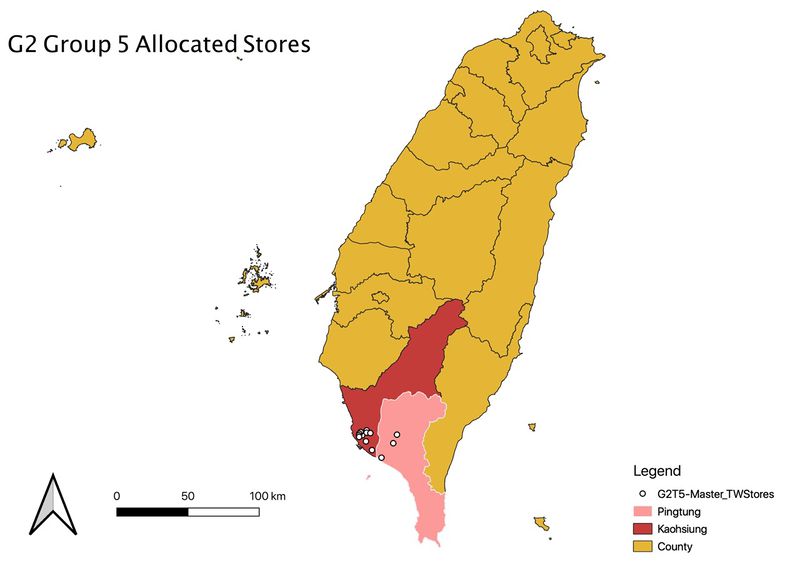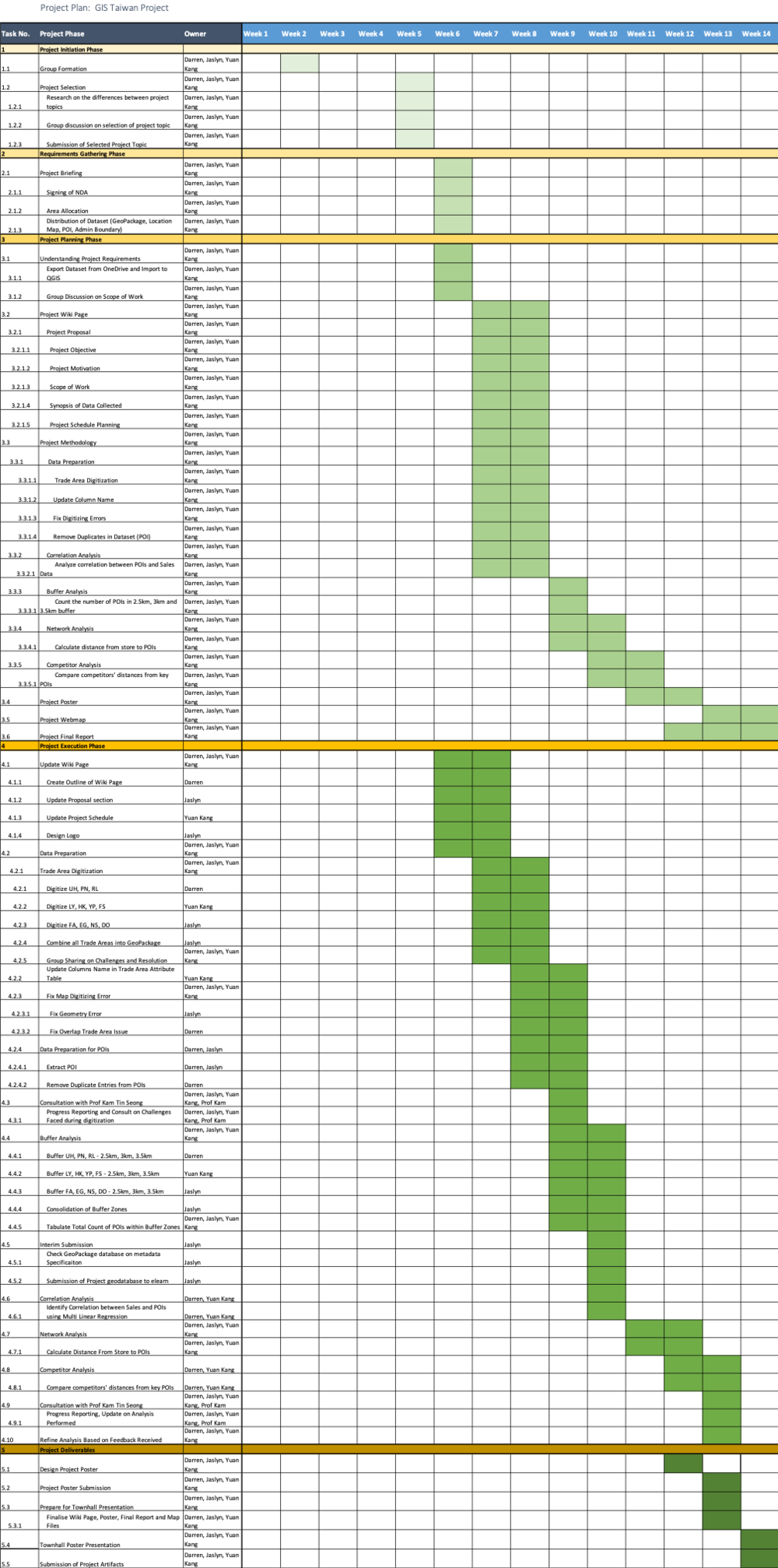G2-Group05-Proposal
Contents
About Pingtung County and Kaohsiung City
Pingtung is the southernmost and fifth-largest county of Taiwan. It is well known for its agriculture, producing sugarcane, rice, bananas tobaccos and fruits. Top attractions in Pingtung include Kenting National Park, Eluanbi Park, and Hengchun Old Town.
Kaohsiung City is the second-largest city in Taiwan and one of the largest ports in the world. A thriving international metropolis at the southern tip of Taiwan, Kaohsiung is home to several popular attraction sites such as Love River, Lotus Pond, and Qijin.
Project Motivation
Our client is a well-established restaurant chain and international franchise with more than 18,000 stores operating in over 100 countries. In Taiwan, our client operates over 220 stores set up across various cities and has plans to further expand its operation in the coming years.
According to https://www.export.gov/article?id=Taiwan-Franchising-Industry-Sector, Taiwan is home to the largest concentration of international and local franchises in the world and the food and beverage franchise market in Taiwan is the most saturated and competitive. In view of the competitive business environment, it is essential for businesses to leverage data analytics to gain a competitive advantage.
In this project, our client has provided us with spatial data specifically for the region Taitung and Kaohsiung. Our team is motivated to find out the underlying reasons attributing to the sales figures for each of the respective stores in the regions. For instance, finding the correlation between the number/types of points of interest (POIs) within the trade area and sales performance. In essence, with the insights derived from our analysis, we aim to help our client achieve an increase in revenue as well as identifying the main drivers behind the success or failure of each store.
Project Objective
The project aims to achieve the following objectives:
1. Digitizing the assigned trade areas layers and extract the profile of each trade area
2. Identifying discrepancies present in the hand-drawn map vs digitized maps. For example, overlaps in trade areas present in hand-drawn maps
3. Create three buffers of 2.5km, 3km, and 3.5km for each trade area and remove overlapping boundaries
4. Based on the trade areas delineated by the respective buffers, calculate the total number of points of interest (POIs) in each buffer
5. Identify the correlation between the number of POIs within a trade area and the sales performance of the store
6. Perform competitor analysis, determine whether the presence of competitors within the same trade area affects sales performance
7. Use of analysis tools available in QGIS to plot charts. For example, depicting the sales performance of each store
8. Translate work in QGIS to web maps
9. Create a poster and project report documenting the team’s findings and analysis
Data Collection
Data Collection


